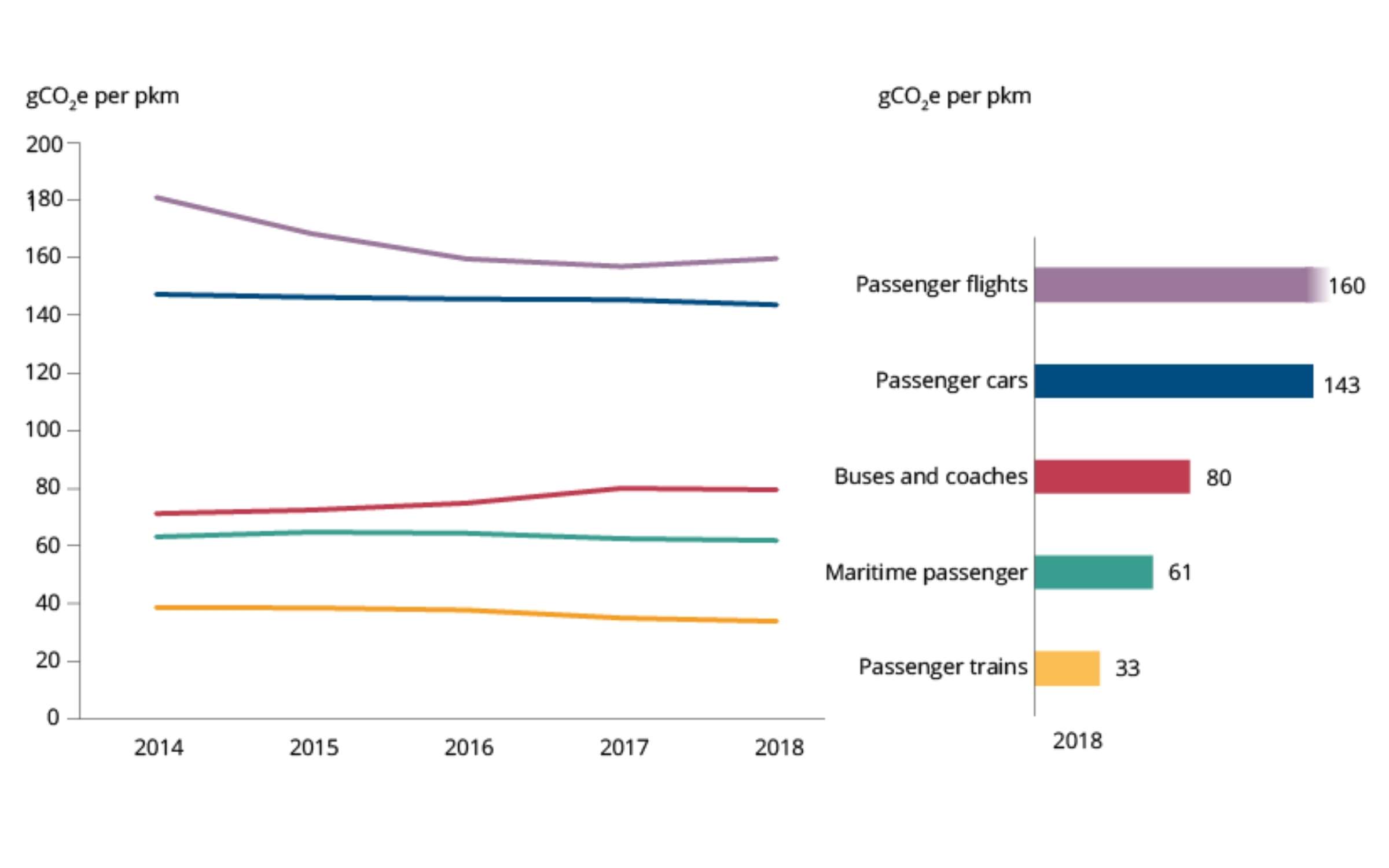The key player in the sustainable mobility strategy
After the article on "Italians and the car", today, we talk about mobility from a completely different perspective!
Did you know that this year is dedicated to the railways?
That’s right, from January 1, 2021, the year of railways officially began in Europe.
What does it mean and what does it consist of?
It is an initiative through which the European Commission aims to promote the spread of rail transport.
Why rail transport in particular?
According to the latest report published by the European Environment Agency, trains are the most sustainable and safe means of transport. Indeed, according to the data, rail transport is responsible for less than 0.5% of total greenhouse gas emissions related to the transport sector. And here I would like to point out that in Europe the transport sector generates ¼ greenhouse gas emissions! Obviously the first in the ranking for environmental impact is the plane, followed by petrol and diesel cars, which can even be more harmful, if used to travel alone! That is why investing in the train, by encouraging companies and citizens to use it, can make a significant contribution to reducing total emissions.
The problem is that only 7% of passengers choose this vehicle. And it is no better with regard to freight transport, which takes place on rail in only 11% of cases!

These are the reasons that prompted the European Commission to focus on its dissemination and enhancement, especially with a view to implementing the European Green Deal.
By the way, you knew it, didn’t you?
Europe aims to become the first continent in the world with zero emissions by 2050. This means that we have a scarce 30 years to reduce our emissions by 90% and to achieve climate neutrality. Considering that 25% of greenhouse gas emissions are attributable to the transport sector, it was essential to define a strategy for sustainable and smart mobility. The Transport Commissioner Adina Vălean’s words are eloquent and leave little room for doubt: “As the backbone that connects European citizens and business, transport matters to us all. We have no time to lose in getting it fit for the future. Digital technologies have the potential to revolutionise the way we move, making our mobility smarter, more efficient, and also greener. We need to provide businesses a clear pathway for the green investments they will need to make over the coming decades. Through the implementation of this strategy, we will create an irreversible shift to zero-emission mobility while making our transport system more efficient and resilient”.
The aim should therefore be to create a transport system based on sustainable means, with green alternatives widely available throughout Europe.
In order to achieve this ambitious target, the Commission established three stages (2030, 2035 and 2050) and an action plan of 82 initiatives.
The objectives to be achieved by 2030 are:
- at least 100 climate-neutral European cities
- minimum 30 million emission-free cars
- doubling high-speed rail passenger transport
- large scale automated mobility
- planned collective journeys with routes of less than 500 km with zero emissions
By 2035 it will be necessary to have designed aircraft with zero emissions, and then arrive by 2050 with:
- almost all cars, vans, buses and heavy vehicles with zero emissions
- rail freight traffic doubled
- a fully operational, multimodal Trans-European Transport Network for sustainable and smart transport with high-speed connectivity
If you are interested in exploring the above strategy and action plan, I recommend that you subscribe to our newsletter (I intend to come back to this topic) or visit the European Commission website.
In this article I am interested in emphasizing that rail transport appears twice within the above objectives. Did you notice that?
One of the objectives to be achieved by 2030 is to double high-speed rail passenger transport. The other, to be implemented by 2050, is the doubling of freight traffic by rail.
Of course, the success of these resolutions is closely linked to the effectiveness of the strategies adopted by individual states, but not only! Europe must build an appropriate regulatory framework, providing incentives and financial instruments to facilitate the expansion of the physical and digital infrastructures needed. Citizens and enterprises, for their part, must understand the goodness of this strategy and develop the awareness that it is right to join forces to contribute to its proper implementation!
And it is precisely on this last point, in my opinion, that the most difficult game is being played. Having an interconnected, multimodal, intelligent and sustainable transport system is a necessary but not sufficient condition for achieving climate neutrality by 2050! For this system to work, it is essential that people know it, appreciate it, but above all that they use it. With this in mind, it is essential to invest in serious and forward-looking communication campaigns aimed at informing, educating and involving citizens (starting with the youngest) at every stage of this process. Another possibility could be to encourage the use of this form of transport through the creation of experiential tourist packages, which consider it an integral part of the value proposal. The mistake to avoid, however, is to put the citizens in front of the fait accompli, without having previously sufficiently sensitized them.
And here I would ask you a provocative question: did you know about the European Railway Year?
Help us inform people about the importance of these issues by sharing this article... TOGETHER WE CAN BUILD A WONDERFUL FUTURE!
